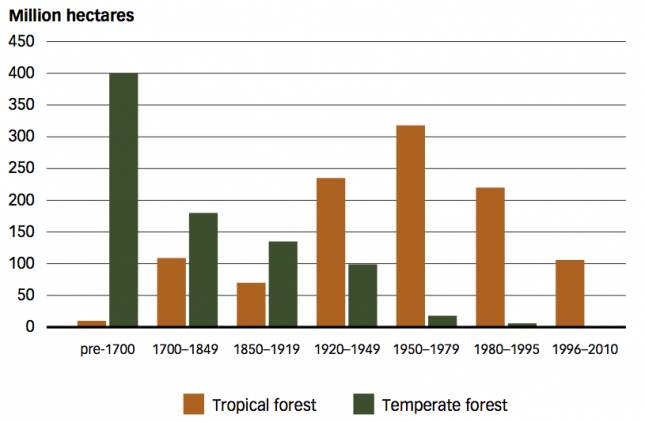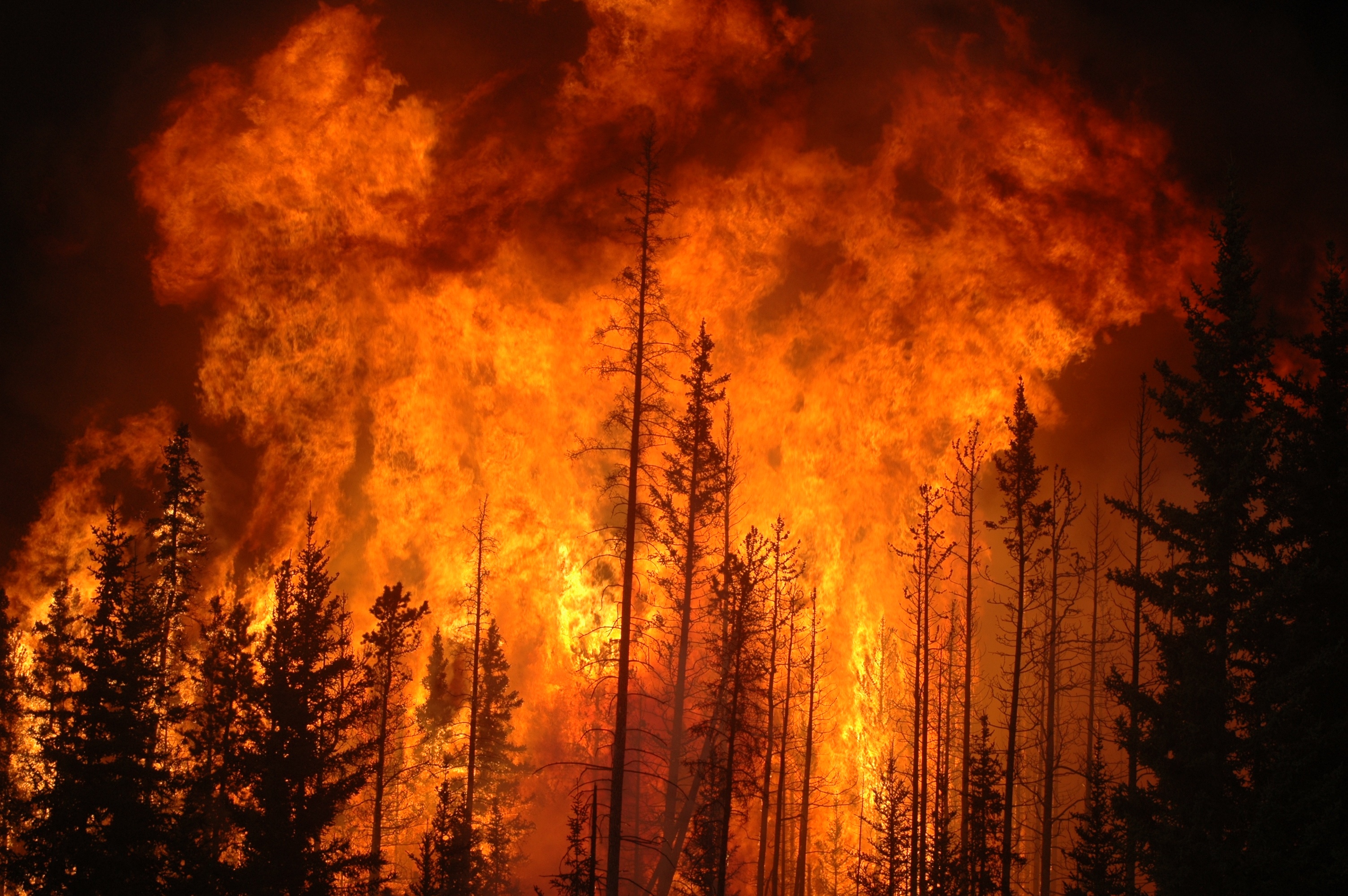Forests have been a natural resource that humans have depended on for millions of years. Today, forests are also one of the most “endangered” natural resource. We are cutting down about 13 million hectares of forest per year all over the world. Asia has the lowest forest cover in the world; less than 20% of the total land area. In India, the current statistics say that forests cover 21% of the land in the country (which could be slightly higher than the actual cover. Governments are known to exaggerate stats).

Meanwhile, the demands for forest produce in industries is on the rise. Furniture, paper, rubber are some of the common industries that depend on forests for their raw materials. On the other hand, forests are being cleared for land by many agencies for urban centers and industries.
Given the precarious situation of forests, we cannot afford to lose any more forest cover than we have to. Here is where nature steps in, in the form of forest fires.
Forest fires can be very beneficial
Now, forest fires are not technically a natural calamity. It is a natural process that plays an important role in the ecological processes of nature. It is vital in the process of ecological succession. It removes dry vegetation and makes way for new communities. These new communities are often richer in species diversity than the old unburnt forest. It also accelerates the evolutionary process. Most floral species of North America (an area highly prone to wildfires) have evolved due to forest fire impetus in a region. Geologically, forest fires in the Paleozoic era are considered to be the reason for massive coal deposits from the time period.
Forest fires occur in areas wet enough to support vegetation, but face extended periods of hot, dry weather. If the place is also windy at that time, they can spread really fast and really far.
Natural forest fires are caused by action of lightening during periods of heat. But this lightening is often followed by rain, which extinguishes the fire soon after it starts. Naturally caused forest fires are controlled; that is why they are more beneficial than harmful.
When Forest fires become a disaster

Forest fires become a natural calamity when they begin to affect human activities. Often, these forest fires are caused by humans, when there is no kill switch like rain to prevent the fire from spreading. Forest fires are responsible for-
- Huge losses in vegetation cover.
- Massive air pollution, which can also seriously affect human populations as seen during the 1977 fires in the Indonesian islands of Sumatra and Borneo.
- It decreases the biomass of the ecosystem, and throws the ecological process off balance.
- Soil is heavily degraded and requires the onset of a new ecological succession process. The establishment of a functioning climax (which the forest possibly was) would take anywhere between 100-1000 years.
- It obviously causes massive industrial losses.
- Huge amount of biodiversity is lost. There are over 48 million species yet to be described by taxonomists; most of them living in forests. Some of them get extinct even before we know about them because of our carelessness.
How often do forest fires occur?
They occur more often than you think. They are common in areas wet enough to support vegetation, but face extended periods of hot, dry weather, like the western Himalayas. In India, the states of Himachal Pradesh and Uttarakhand are the worst affected every year. Forest fires begin around February and continue until the onset of monsoon in this region, which is around August. This year saw 1,470 incidents of forest fire in Uttarakhand itself, affecting 3,185 hectares of land. In Himachal Pradesh, the affected area is around 4500 hectares.

Forest fires can also intensify due to effects of global climatic phenomenon. Heat waves, droughts, El Nino (particularly for India) bring about especially good conditions for the ignition of forest fires.
But the most common causes of forest fire in the last decade have been human-induced. A Forest Survey of India report stated that 95% of the fires in India were because of human activities. These are both non-intentional and intentional. Non-intentional causes include throwing away cigarette buds without extinguishing them, burning forest litter without proper care etc. Intentionally, forest fires are caused by starting fires to drive away animals and bees, and in extreme cases by people taking revenge on the forest departments.

While forest fires do play an important role in ecology, human induced fires are causing more harm than good. The fires of Himachal Pradesh this year have caused damages worth 57 lakhs. The account of ecological losses of biodiversity, soil etc are unaccounted for.
It is important both, to prevent silly mistakes that cause fires and manage fires effectively when they happen nevertheless. More on that in future posts!
References:
- https://ourworldindata.org/forest-cover/#global-forest-cover-change-over-the-last-centuries- Forest Cover stats.
- http://www.greenfacts.org/en/forests/l-2/2-extent-deforestation.htm
- http://himachal.gov.in/WriteReadData/l892s/172_l892s/5-54447247.pdf- Forest fires of India.
- Forest Survey of India reports
- http://indianexpress.com/article/explained/uttarakhand-fire-himachal-fire-india-forests-fire-2781274/

[…] via Forest Fires: A burning issue — Eco-Intelligent […]
LikeLiked by 1 person
Great article! I agree most people don’t know how regularly fires occur. I can’t believe that 95% of the fires in India were because of human activities. I know in Australia we too have a problem with non-intentional fires being caused by throwing away cigarette buds that haven’t been properly extinguished. In fact the Australian Fire Authorities Council estimates that more than 12 fires a day (that’s 4380 a year!!) are caused by cigarettes or smoking materials (you can find out more here: https://www.cleanup.org.au/PDF/au/cua-cigarette-butts-fact-sheet.pdf
LikeLiked by 1 person
Thank you! Wow, the numbers in Australia are shocking as well!
LikeLike
[…] is this important? As I have mentioned before, forest fires have massive ecological benefits if controlled and used in …. But it is key that forest managers do not let it get out of […]
LikeLiked by 1 person